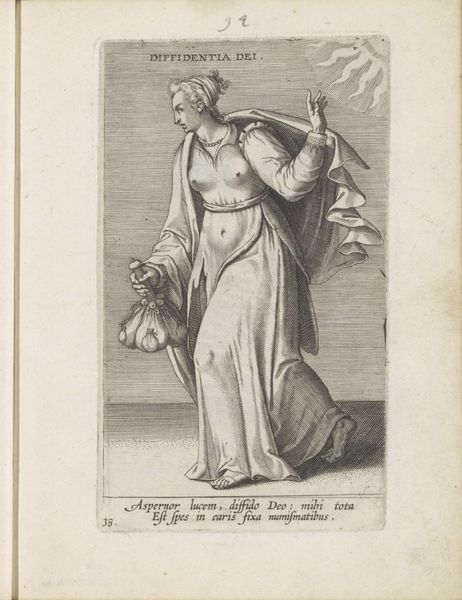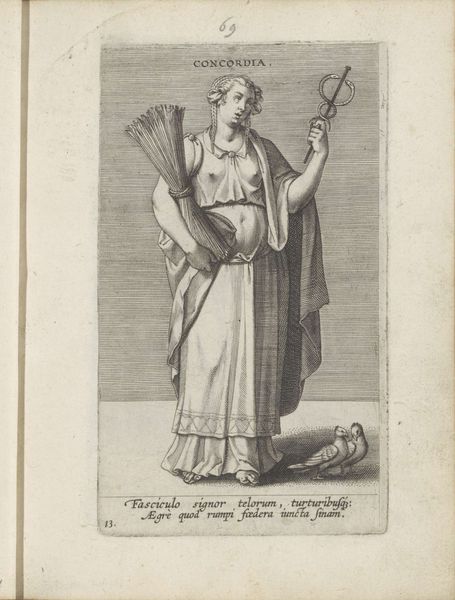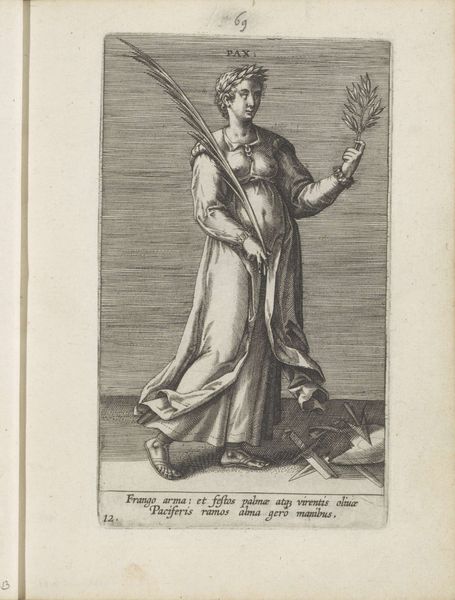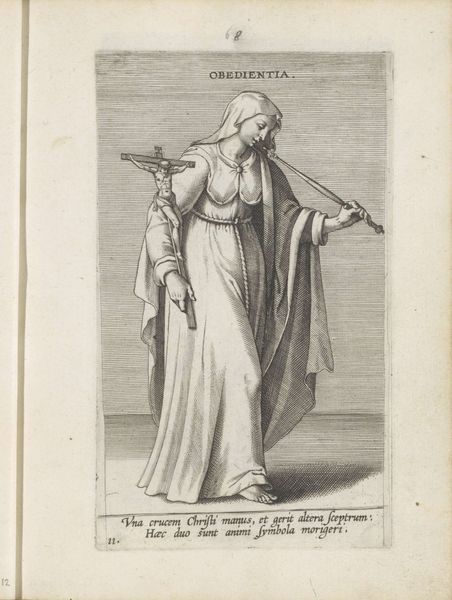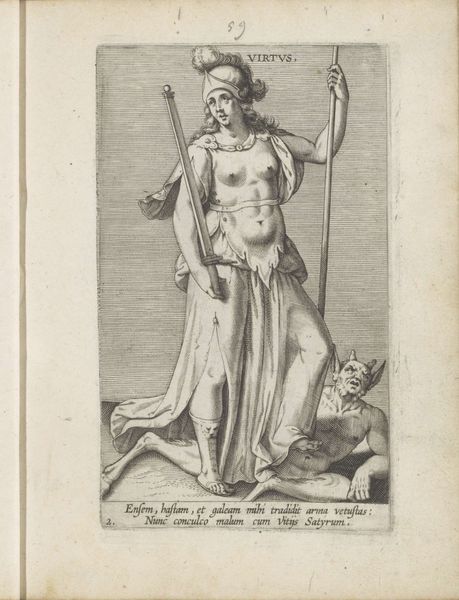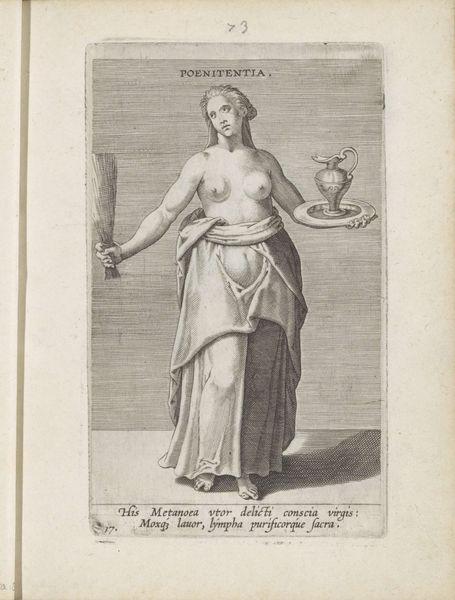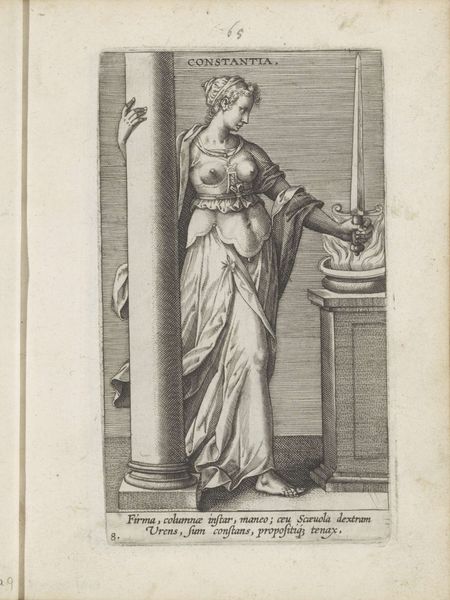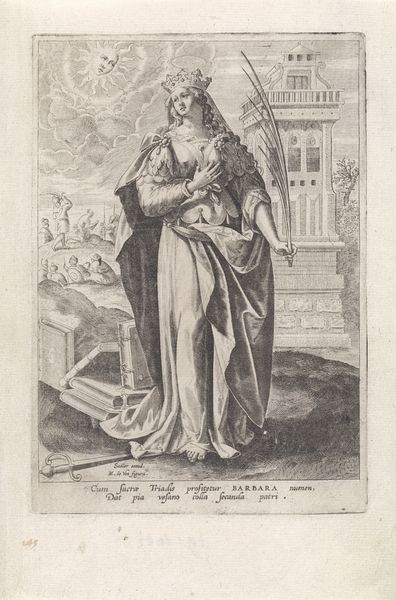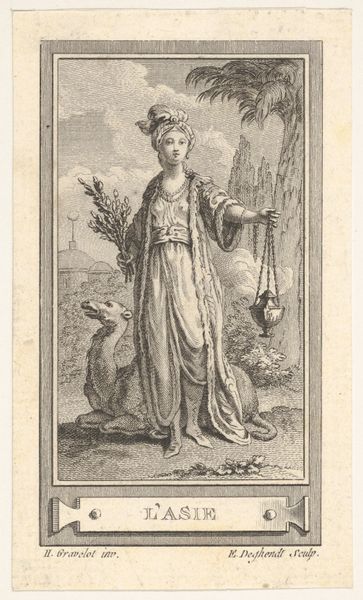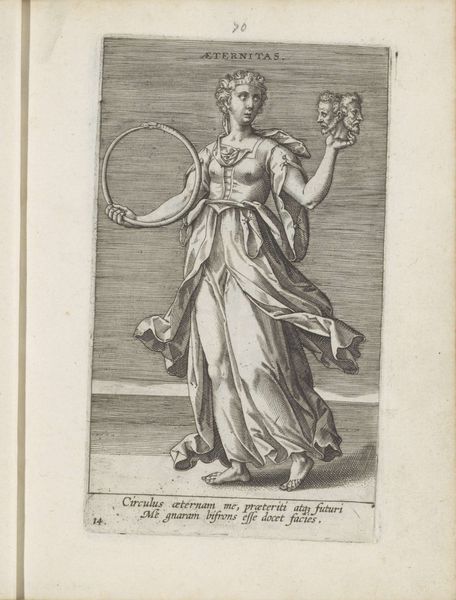
print, engraving
allegory
mannerism
figuration
engraving
Dimensions: height 152 mm, width 88 mm
Copyright: Rijks Museum: Open Domain
Curator: Standing before us is “Geduld of Lijdzaamheid,” or “Patience,” an engraving by Philips Galle dating to around 1585 to 1590. It's currently held at the Rijksmuseum. Editor: It strikes me as stoic and restrained, though undeniably intricate. There’s a coolness to the engraving, despite the suggestion of turmoil in some of the imagery. The detail is quite exquisite. Curator: Indeed. Galle, along with other artists of his time, often engaged with allegorical imagery, presenting virtues and vices in human form as a form of didactic communication, popular in the art world. It spoke to a well-read and largely upper class audience. Editor: Absolutely. And here, Patience is symbolized through a central female figure, "Patientia," holding what looks like lilies and leafless branches. The figure has on her head an animal or figure, possibly representative of hope, sitting perched on her helmet. Tell me more. Curator: You've picked up on some very crucial symbols, many drawn from earlier Italian iconographic tradition, which was the vogue at the time. Lilies emerging from thorns, suggesting resilience in difficult situations, as we read from the inscription below. And, there is a salamander on her helmet, thought at the time to endure flames, along with the tethered lion. Each element serves as a reinforcement of the concept of 'patience'. Editor: And what of the broken wheel in the background, the apple, and snake? Those feel overtly Biblical in their visual associations with ruin and evil, and something close to Original Sin. Curator: Precisely. It appears Galle combined earlier, often classical allusions of 'patience' with Christian allusions of 'forbearance', providing something that could resonate with various people looking at the art. It is not simply 'waiting' which patience implies in modern society, but something that acknowledges suffering as necessary. It offers ways that individuals and perhaps rulers could manage societal pressures during the period of Dutch revolt against Spain, in the 16th century. Editor: A complex set of images intended for contemplation! Understanding the socio-political background really unlocks its richness. Curator: Yes, the confluence of historical circumstances and visual traditions really shaped the art and what patience could and perhaps *should* look like. Editor: This makes me realize the power attributed to virtues, visually shaping one’s behavior as though by imitation and encouraging societal good. A valuable, almost psychological strategy using artwork. Curator: Indeed. What has been a worthwhile effort has now come to a new stage. I am so glad you and I, together, took the effort to analyze and see such value.
Comments
No comments
Be the first to comment and join the conversation on the ultimate creative platform.
